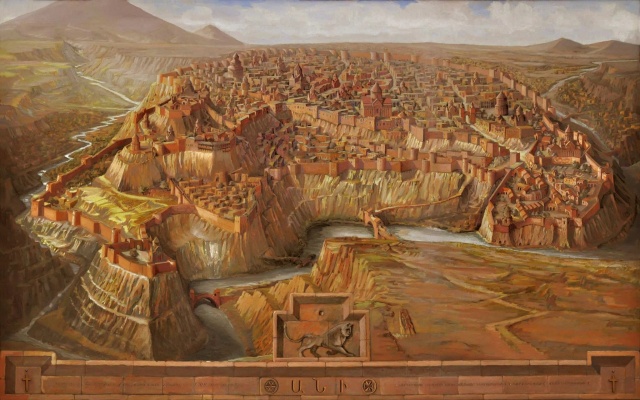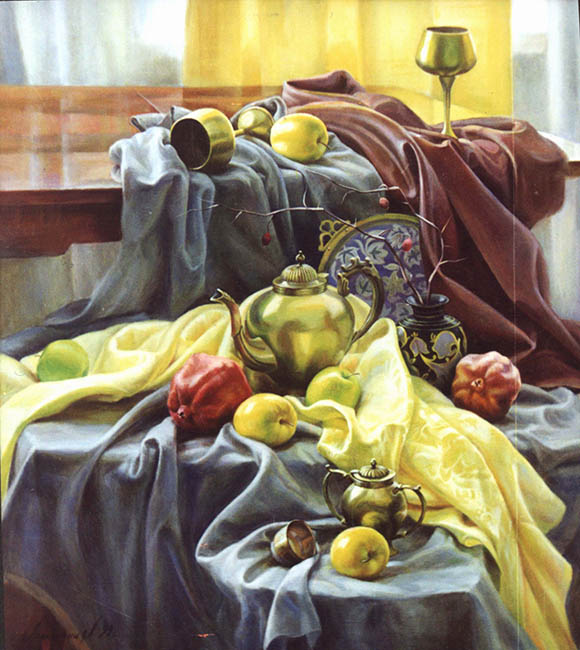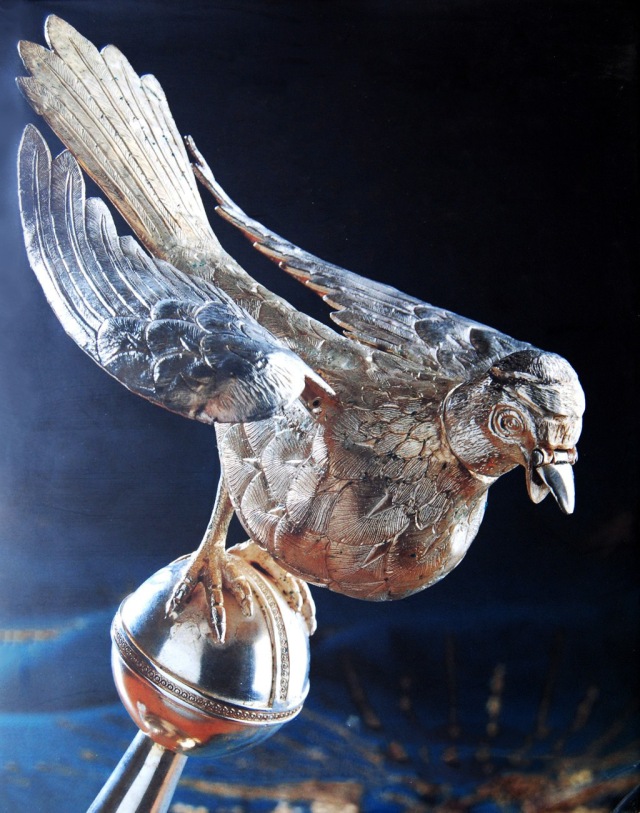

 Leather Shoe – 5,500 years old
Leather Shoe – 5,500 years old
A perfectly preserved shoe, 1,000 years older than the Great Pyramid of Giza in Egypt and 400 years older than Stonehenge in the UK, has been found in a cave in Armenia. The 5,500 year old shoe, the oldest leather shoe in the world, is made from a single piece of cowhide, cut into two layers, tanned and laced. It contained grass, although the archaeologists were uncertain as to whether this was to keep the foot warm or to maintain the shape of the shoe. “It is not known whether the shoe belonged to a man or woman,” said lead author of the research “We thought initially that the shoe and other objects were about 600-700 years old because they were in such good condition,” said Dr Pinhasi. “It was only when the material was dated by the two radiocarbon laboratories in Oxford, UK, and in California, US that we realised that the shoe was older by a few hundred years than the shoes worn by Ötzi, the Iceman.” Three samples were taken in order to determine the absolute age of the shoe and all three tests produced the same results. Interestingly enough the shoe very much resembles a traditional Armenian shoe known as “charokh” a type of moccasin, still in popular use in Armenia.
Source: http://www.sciencedaily.com/releases/2010/06/100609201426.htm
 Sky Observatory – 7,500 years old
Sky Observatory – 7,500 years old
 “Carahunge” or “Zorats Karer” (also known as the Armenian Stonehenge) is a megalithic stone circle located some 200km from the Armenian capital Yerevan, not far from the town of Sisian. The name derives from “Car” for “stone” and “hunge” for “sound” or “voice”, meaning “singing stones”. The structure is believed to be a sky observatory due to the enigmatic holes drilled in the stone pointing at the cosmic bodies like the sun, the moon and the stars. It is specifically aligned with the Cygnus constellation and its brightest star Deneb. Being over 2000 years older than the Stonehenge it is believed to be the oldest known sky observatory. However, only since the middle of the 80ies, Carahunge was first interpreted as an archaeoastronomical monument and was studied by Prof. E.S. Parsamian (1999) and Prof. P.M. Herouni (1998) who have dated the structure to around 5,500 BCE. There are 222 stones with a total extent exceeding 250 metres, including 84 with holes (with 4-5 cm diameters).
“Carahunge” or “Zorats Karer” (also known as the Armenian Stonehenge) is a megalithic stone circle located some 200km from the Armenian capital Yerevan, not far from the town of Sisian. The name derives from “Car” for “stone” and “hunge” for “sound” or “voice”, meaning “singing stones”. The structure is believed to be a sky observatory due to the enigmatic holes drilled in the stone pointing at the cosmic bodies like the sun, the moon and the stars. It is specifically aligned with the Cygnus constellation and its brightest star Deneb. Being over 2000 years older than the Stonehenge it is believed to be the oldest known sky observatory. However, only since the middle of the 80ies, Carahunge was first interpreted as an archaeoastronomical monument and was studied by Prof. E.S. Parsamian (1999) and Prof. P.M. Herouni (1998) who have dated the structure to around 5,500 BCE. There are 222 stones with a total extent exceeding 250 metres, including 84 with holes (with 4-5 cm diameters).
Source: http://www.aras.am/Archaeoastronomy/astronomyancientarmenia.html
 Human Brain – 6,000 years old
Human Brain – 6,000 years old
 In a cave overlooking southeastern Armenia’s Arpa River a team of international scientists have uncovered three Copper Age human skulls, each buried in a separate chamber. The skulls belonged to 12- to 14-year-old girls. The team in Armenia, comprised of 26 specialists from Ireland, the United States and Armenia, had been excavating the three-chamber cave where the brain was found since 2007. “The preliminary results of the laboratory analysis prove this is the oldest of the human brains so far discovered in the world,” said Dr. Boris Gasparian, one of the excavation’s leaders and an archeologist from the National Academy of Science’s Institute of Archaeology and Ethnology in Yerevan. “Of course, the mummies of Pharaonic Egypt did contain brains, but this one is older than the Egyptian ones by about 1,000 to 1,200 years.” The cave’s damp climate helped preserve red and white blood cells in the brain remains. Genetic research is underway.
In a cave overlooking southeastern Armenia’s Arpa River a team of international scientists have uncovered three Copper Age human skulls, each buried in a separate chamber. The skulls belonged to 12- to 14-year-old girls. The team in Armenia, comprised of 26 specialists from Ireland, the United States and Armenia, had been excavating the three-chamber cave where the brain was found since 2007. “The preliminary results of the laboratory analysis prove this is the oldest of the human brains so far discovered in the world,” said Dr. Boris Gasparian, one of the excavation’s leaders and an archeologist from the National Academy of Science’s Institute of Archaeology and Ethnology in Yerevan. “Of course, the mummies of Pharaonic Egypt did contain brains, but this one is older than the Egyptian ones by about 1,000 to 1,200 years.” The cave’s damp climate helped preserve red and white blood cells in the brain remains. Genetic research is underway.
Source: http://www.popsci.com/scitech/article/2009-01/archeologists-unearth-oldest-old-world-brain
Continue reading →





 Sky Observatory – 7,500 years old
Sky Observatory – 7,500 years old
 Human Brain – 6,000 years old
Human Brain – 6,000 years old












